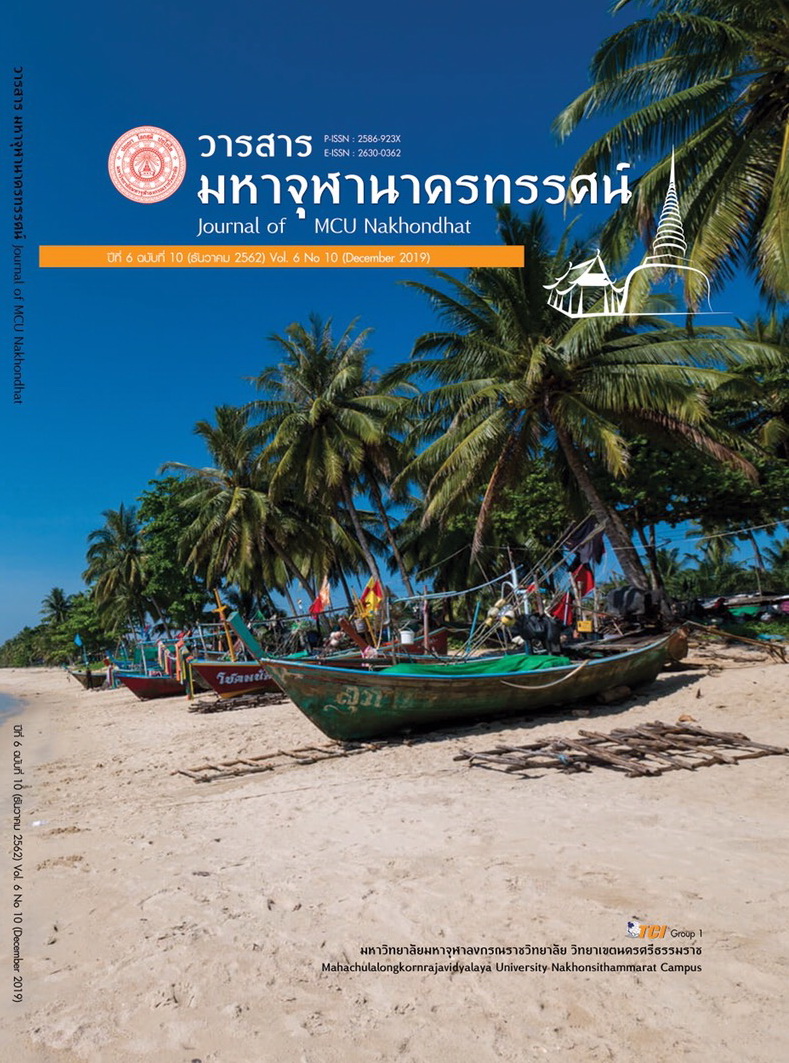THE HAPPINESS AND QUALITY OF LIFE OF THE SUPPORTIVE STAFFS AT COLLEGE OF NURSING
Main Article Content
Abstract
This cross-sectional research was to study the level of happiness and quality of life of supportive staffs in college of nursing. There were 50 supportive staffs in college of nursing who worked more than 6 months. The research instrument were the Happinometer and WHOQOL – BREF – THAI -26. Data were collected in January 2019 and analyzed by frequency, percentage, mean and standard deviation.
Results revealed:
- The average of happiness level of all supportive staffs were happy level (µ = 64.35, σ = 7.87), the highest level was happy soul domain (µ = 74.10, σ= 11.85) and happy money domain was the lowest (µ = 50.88, σ = 16.85).
- The level of individual happiness, most of supportive staffs were happy level (90.00%), highly happy (8.00%) and unhappiness (2.00%)
- The overall quality of life was good (56.00%), in addition to moderate quality of life (44.00%), In the physical domain were equal moderate and good level (50.00%), the psychological domain was good level (76.00%), the social relationship was good level (54.00%) and the environment domain was the moderate level (34.00%)
The supportive staffs had happiness, good level of quality of life. They had the lowest level happiness in money domain. These guideline to manage and enhancement daily life, work life and related factors.
Article Details
References
กาญจนา ตั้งชลทิพย์ และคณะ. (2553). การศึกษาเพื่อพัฒนาเกณฑ์มาตรฐานตัวชี้วัดคุณภาพชีวิตของข้าราชการ. ใน รายงานวิจัย. สำนักวิจัยและพัฒนาระบบงานบุคคล.
ศิรินันท์ กิตติสุขสถิต และคณะ. (2554). แบบสำรวจความสุขด้วยตนเอง. นครปฐม : สถาบันวิจัยประชากรและสังคม มหาวิทยาลัยมหิดล.
ศิรินันท์ กิตติสุขสถิต และคณะ. (2555). คู่มือการวัดความสุขด้วยจนเอง Happinometer. นครปฐม: สถาบันวิจัยประชากรและสังคม มหาวิทยาลัยมหิดล.
สายธาร ทองอร่าม. (2550). ความผูกพันต่อองค์กร: กรณีศึกษา บริษัท เดอะมอลล์กรุ๊ป จำกัด สาขารามคำแหง. กรุงเทพมหานคร: สถาบันบัณฑิตพัฒนบริหารศาสตร์.
สุวัฒน์ มหัตนิรันดร์กุล และคณะ. (2540). เปรียบเทียบแบบวัดคุณภาพชีวิตขององค์การอนามัยโลกทุก100 ตัวชี้วัด และ 26 ตัวชี้วัด. เชียงใหม่: โรงพยาบาลสวนปรุง จังหวัดเชียงใหม่.
Boroujeni, I. N. et. al. (2012). Relationship between happiness and organizational commitment of the employees of Youth and Sports Department of Chahar Mahal and Bakhtiari province. International Journal of Sport Studies, 2(9), 427-431.
Dessler, G. (1991). Human Resource Management. (8th ed). New Jersey: Prentice-Hall.
Greenberg, J. & Baron, R. A. (1995). Behavior in organization: Understanding and managing the human side of work. (5th ed.). New Jersey: A Simon and Schuster.
Khodabakhshyan, M. (2013). Analysis of the relationship between employee happiness and organizational commitment. International Journal of Research in Organizational Behaviour and Human Resource Management, 1(4), 218-229.
Lyubomirsky, S. et. al. (2005). The benefits of frequent positive affect. Psychological Bulletin, 131(6), 803-855.
Oswald, A. J., et. al. (2015). Happiness and Productivity. Journal of Labor Economics, 33(4), 789 – 822.

